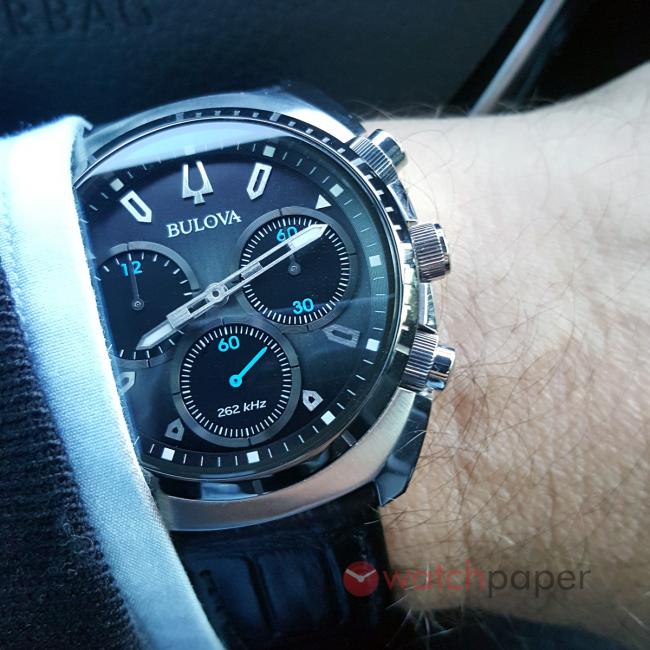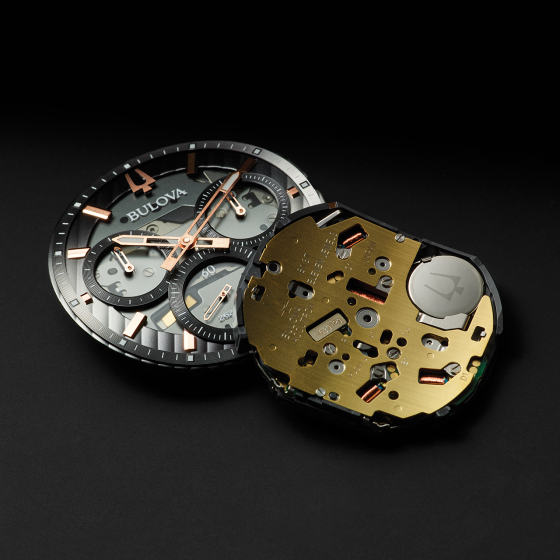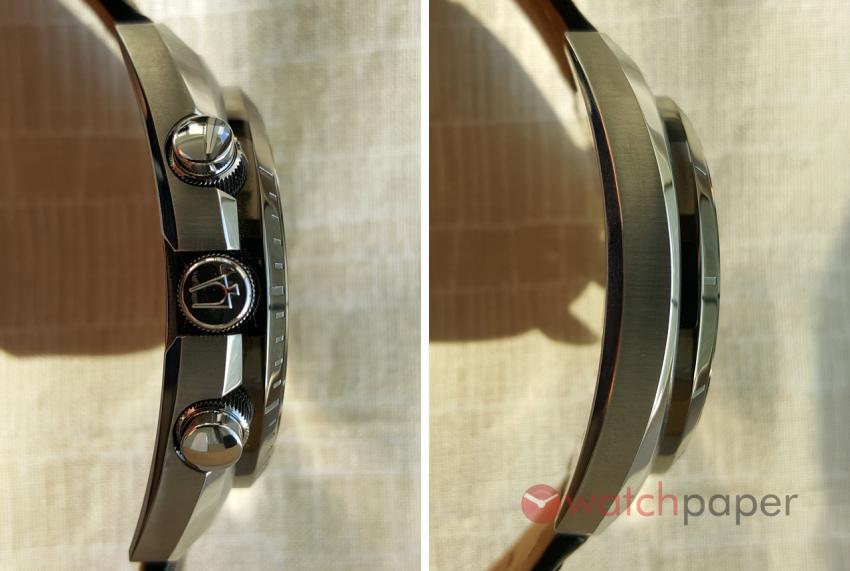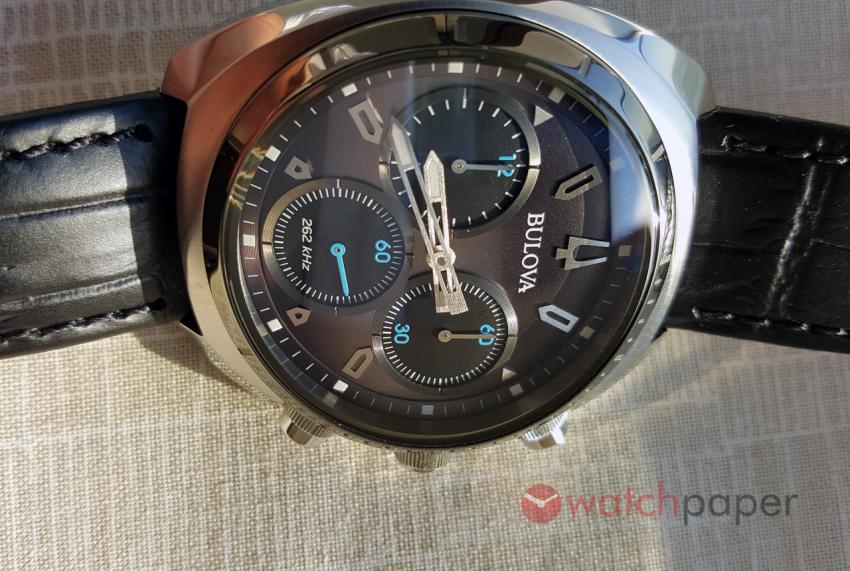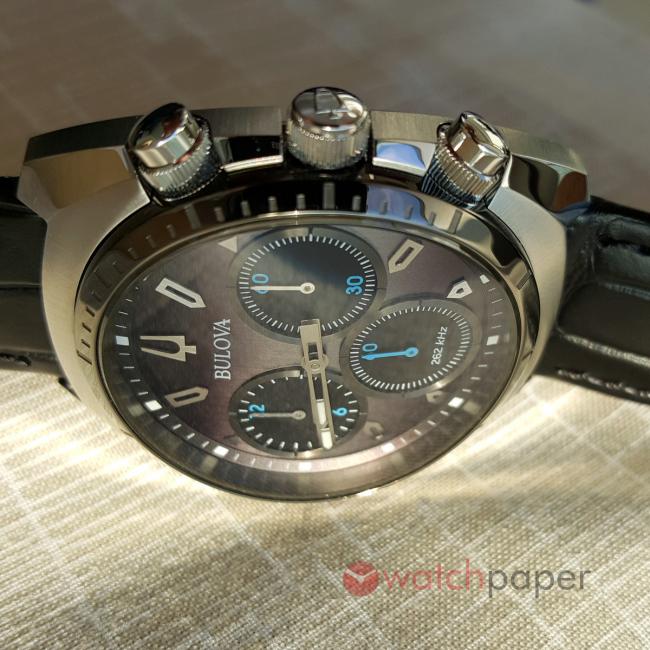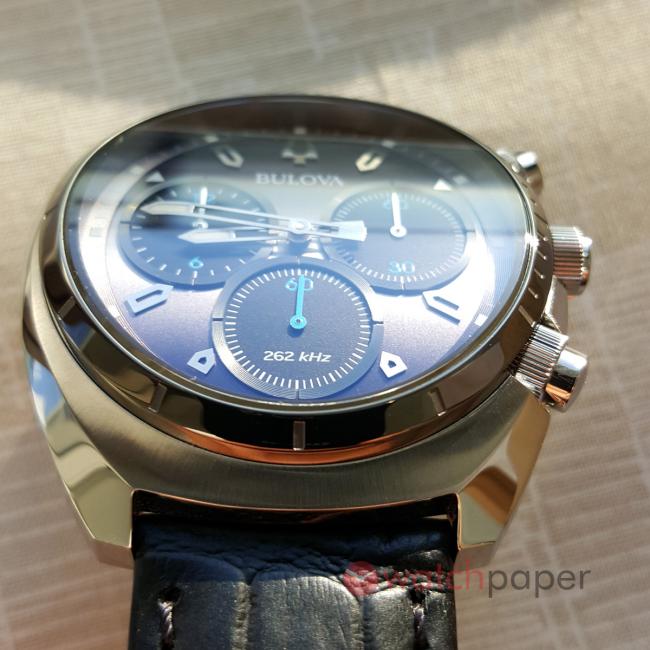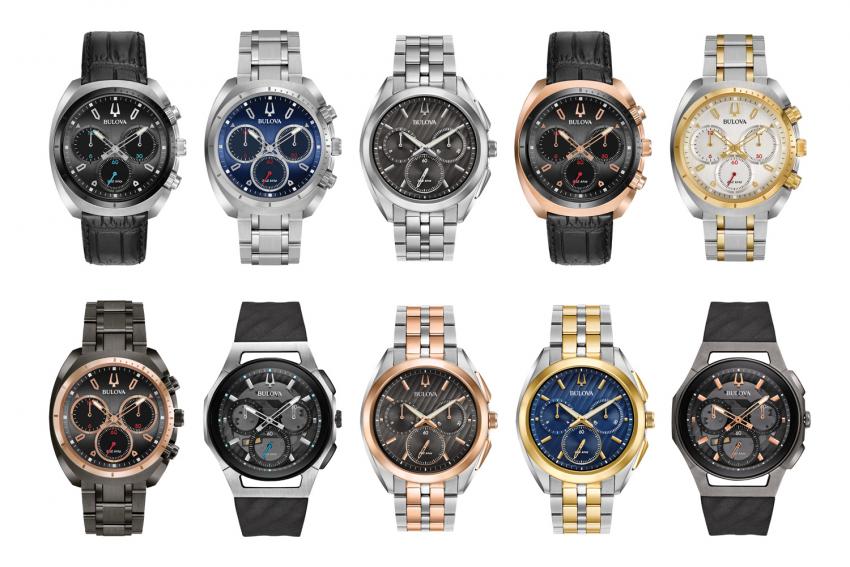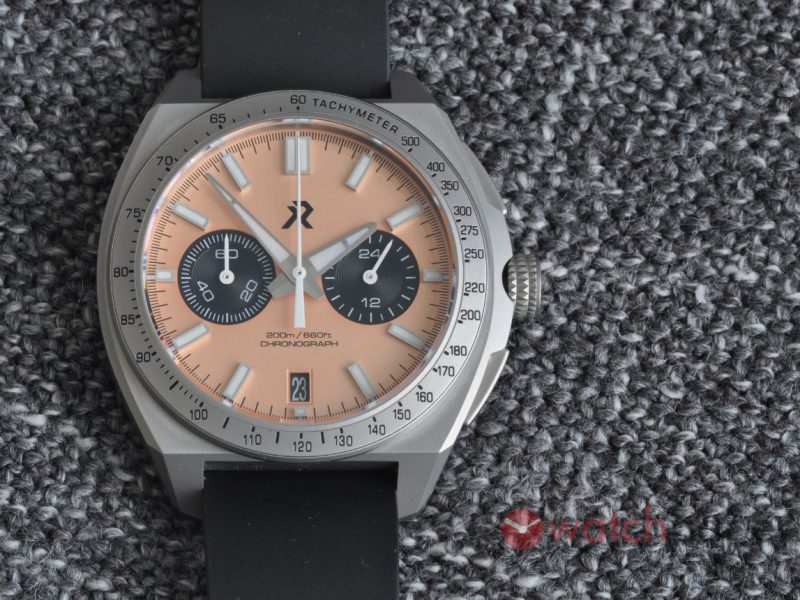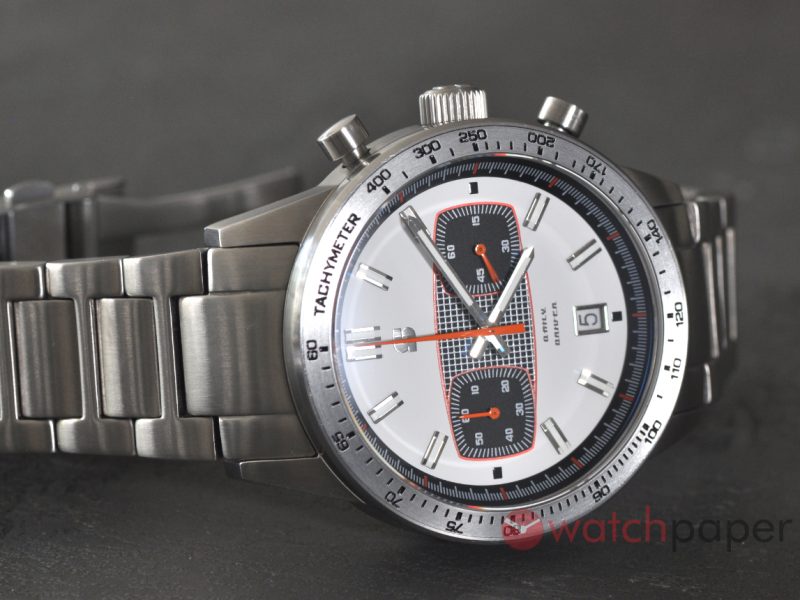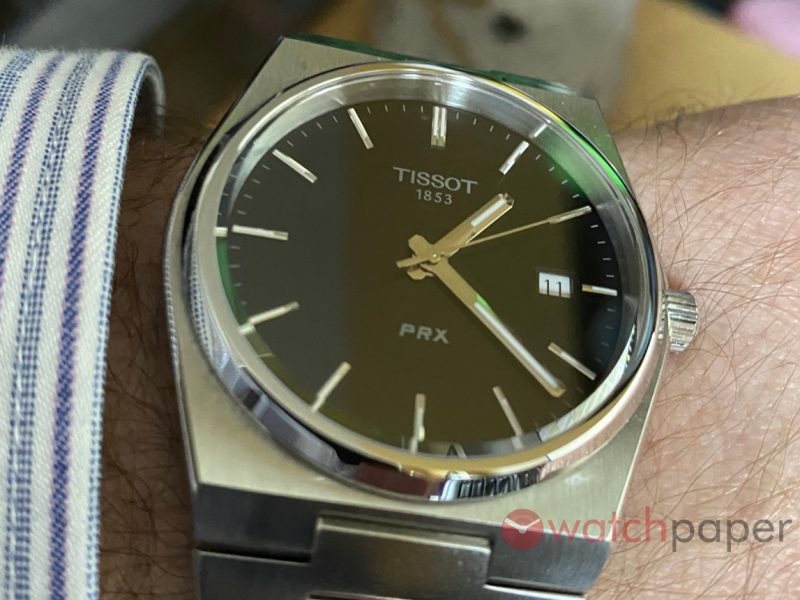A week on the wrist: Bulova Curv
One of the more talked-about watches at this year’s Baselworld was Bulova’s new Curv. The venerable American watchmaker refuses to follow the corporate take-over script: the one where the original company’s virtues and identity gradually fade away under the dictates of new corporate leadership. Acquired in 2007 by Citizen, the addition of Bulova made Citizen group the largest watch company in the world at the time and Bulova has continued to innovate, producing a series of pieces since that resonated in the watch-collecting world: the Precisionist, their moon watch, and now the Curv. At a recent launch event in Toronto, Bulova announced upcoming pieces including exciting (to me at least) news of a new edition of their Devil’s Diver, so it appears the hits may keep coming. As an interesting aside, during the launch event I asked Bulova how they managed to bring their Moon Watch to market so close to the historic sale of Dave Scott’s personal Bulova for approximately 1.6 million dollars at auction. I incorrectly assumed the two events were somehow related and was ready to lavish praise on Bulova for the efficiency of their product development cycle. But Bulova confirmed to me that their Moon Watch had been in the works for quite some time when the Dave Scott sale happened. It was an extremely fortunate coincidence, and when I begged them to shrink their current model by a couple of millimetres, they said they were working on that too, so there might be even more potentially great news for the collecting community in the future from Bulova.
The Curv, exactly as the name suggests, is the first watch with a chronograph movement that is itself curved to follow the wrist-hugging and ergonomic contours of the case. The movement continues in the Bulova tradition of high-accuracy quartz movements with a 262 kHz frequency that promises +/- 10 seconds per year variance, which is an entirely different level of accuracy compared to a more standard quartz that can expect to vary by 1 second either way per day. I was expecting the high-frequency quartz to produce the sweeping effect touted with the second hand on the Precisionist models, but the register – at 6 o’clock on my Curv – containing the second hand didn’t so much sweep as produce smaller, sub-second jumps. So, not exactly imitative of a mechanical movement, but the stops are much less pronounced than on a typical quartz watch. For illustrative purposes, Bulova had a movement available apart from the case and true to the name, the quartz engine is a gracefully arced wafer of component parts with a “winding” stem protruding from it ending in a tuning-fork signed crown. Versions of the Curv that show the movement through a skeletonized dial and display caseback are available and represent, to me at least, the most desirable versions of the model. This, despite the fact that making a quartz movement look sexy to mechanical watch aficionados represents an uphill battle. Bulova doesn’t shy away from the challenge and foregrounds its accomplishment with the movement as much as with the case design. The curved and rectangular casing is reminiscent of some of Bulova’s watches from the 1930s like the Ambassador or President, but the Curv goes beyond these antecedents and uses the shape as an organizing engineering, design and ergonomic principle.
Aesthetically, the new Curv is a very pleasant companion on the wrist. With a stainless steel cushion case that mixes brushed and polished surfaces, the Curv adds a polished, gunmetal-grey, fixed bezel that frames the curved sapphire crystal protecting the dial. The dial was the real highlight of the version I wore: the curvature of the watch, combined with the brushed metal of the dial created a gradient effect with the rich grey base colour. From two to four o’clock across the dial to the eight and ten o’clock markers, the dial brightens in the light that hits the apex of the case’s curvature and gradually darkens as you look up the dial to twelve or down to six o’clock. The effect is striking and makes the watch look much more luxurious than its reasonable price would suggest. The three chronograph registers are set off from the dial by grooved circular frames that overlap in the centre, and these echo the groves found in the chapter ring at the edge of the dial. The only colour on the dial is the pale blue of the small seconds hand and the numbering in the minute and hour totalizers. Hour indices are applied and dart-shaped except for the traditional Bulova tuning fork at twelve o’clock. The only lume resides in the skeletonized minute and hour hands and it’s not going to compete for attention with any divers you have in your collection. This is a dressy chronograph. The chronograph start button actually has two modes: a single click activates the small second hand in the 6 o’clock register for constant seconds. Reset the chronograph, restart it, and the totalizer registers kick in to track minutes and hours.
At 43.5 mm wide, the watch doesn’t play as big as this dimension would suggest. Lug-to-lug measures 47 mm but, again, the curvature of the case negates some of the size by moving it down the sides of your wrist. Getting the watch to slip under a dress shirt is not a chore, especially since the case is a svelte 10mm in height.
The Curv is a handsome addition to Bulova’s product lineup and it won’t break your wallet either. The version I test drove will set you back approximately $800. There are other options, up to the $1200 skeletonized dial version with rose-gold accents and squared-off pushers, but for a budget-friendly dressy chronograph, the Curv should be on your short list.
For more information visit bulova.com


